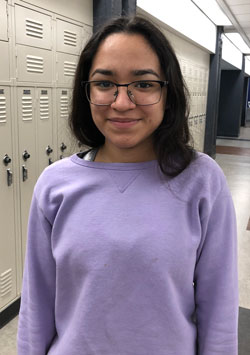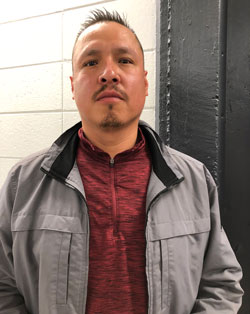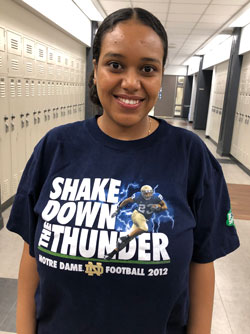Kent ISD — Senior Jessica Rodriguez understands the need for interpreters in the medical field.
The Hope Academy of West Michigan student, who is attending Kent Career Tech Center’s medical assistant program, has had to serve as an interpreter for her family.
“Being bilingual has helped,” Jessica said. “For that reason, I wanted to be able to use my language skills to be able to help others.”

Jessica is one of about 26 students who were the first to complete the Community Interpreter Program offered through Kent ISD Adult Education. The program is a 48-hour course designed to help students learn how to be interpreters in healthcare, law, education, and social services.
Upon completion, the students take an exam to receive a certificate and can then become an interpreter. After getting some experience, they may pursue certification through Certification Commission for Healthcare Interpreters or the National Board of Certification for Medical Interpreters.
“We are always looking for programs that will help our students in career pathways,” said Hollin De La Cruz, Integrated English Literacy and Civics Education (IELCE) program navigator for Kent ISD Adult Education.
Having served as an interpreter, De La Cruz said she saw firsthand the need for more individuals in the field. By offering this training, Kent ISD is able to provide a skill set to its students that helps them secure work, she said.
Since the program is funded by a federal grant from IELCE, it has to meet certain criteria by providing services to adult English language learners that help them achieve English competency and acquire the skills to function as parents, workers and citizens in the United States. Participants must be 18 or older, and must test at the advanced level in both reading and listening to take the class.
A limited number of spots were made available to KCTC students, but they also had to take an intake test to prove they needed English Literacy services in order to qualify.
“We were overwhelmed by the response from students,” De La Cruz said, adding that a second class of 24 students has already started and there are plans to expand the program to 68 hours in the fall.

More Than Just Translating
“I wanted to learn more English,” said Grand Rapids resident and English as a Second Language (ESL) student Pablo Rocha about why he decided to participate in the Community Interpreter Program. “I am learning how to write a lot, how to read, pronounce my words and learning the definitions of the words.”
The students speak many different languages, including Spanish, French, Vietnamese, Korean, Swahili, Hindi and Tigrinya (which is spoken in Eritrea and northern Ethiopia). For most, the class offers an opportunity to build on their English skills.
“I am a mother of two and I love to go to school and learn,” said Grand Rapids resident and ESL student Heaven Abrahaley, who speaks Tigrinya. “I see this in (the) future as helping me to get an education and hopefully help others.”
For many students, like Jessica, the biggest lesson learned is that there is a lot more to being an interpreter than translating languages. De La Cruz said there are many specific rules and regulations that all interpreters have to follow. For example, they cannot show bias, they must interpret everything that is said and they cannot filter information.
“Sometimes, when a person is interpreting for a family member, they can filter information or provide an opinion or thought,” De La Cruz said. “As an interpreter, your primary goal is to make sure that the different parties have clear communication and understand each other. You are not there to provide personal opinion or thoughts.”

Accuracy Matters
An interpreter also has to be aware of every detail and be as accurate as possible, said Kent ISD Student Success Facilitator Danny Verbrugge, the instructor for the Community Interpreter Program.
To help emphasize the importance of paying attention and being accurate, Verbrugge put together a classroom activity where the students line up in four-person rows with paper taped to their backs. The last student in each row draws a shape on the back of the person in front of them. The next student draws what they felt on the back of the student in front of them, and the student at the front draws what they felt on the whiteboard.
The goal of the activity, which mimics the “telephone game,” is to have the drawing on the board match what the first student drew.
“The idea is to help the students understand that interpreting is interpreting, but that every single interpreting situation is unique, which makes it important to be accurate,” Verbrugge said.
While Jessica admitted she was surprised by the amount of rules in interpreting, she does believe the program will be a benefit, especially since she plans to pursue health care as a career.
“It is the kind of training I need to be able to help people, which is what I want to do,” she said.
Rocha believes that what he has learned through the Community Interpreter Program will lead to something in the future, but for now he plans to continue building his English skills.
And classmate Abrahaley said, “Through this, I have learned a lot about confidence,” adding that the program has given her encouragement that she is going in the right direction.













